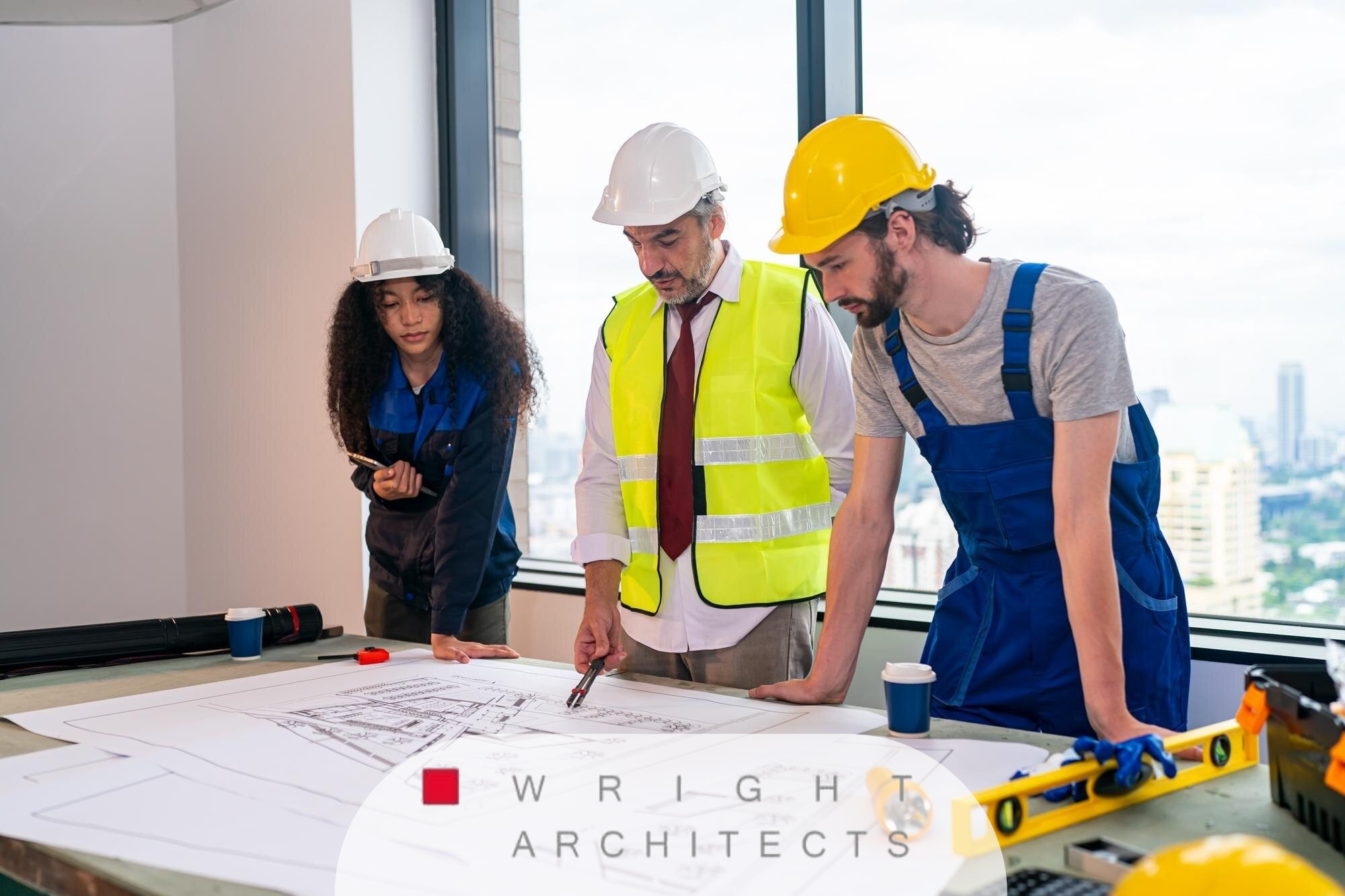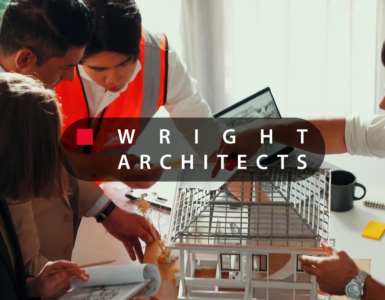Why Collaboration Defines High-Performance Residential Design
In the evolving landscape of residential construction, high-performance homes demand a level of precision and coordination that extends far beyond traditional building practices. Unlike conventional projects, where aesthetic and structural considerations may dominate, high-performance residential design requires the integration of architecture, engineering, and construction methods that prioritize sustainability, efficiency, and long-term durability. This makes collaboration not just beneficial but essential.
The Hudson Valley, with its varied terrain, historic neighborhoods, and increasingly stringent energy codes, presents unique challenges that require seamless integration between architects and contractors. From navigating sloped sites and sensitive ecosystems to addressing preservation requirements in historic districts, the region demands a design-build process where every stakeholder is aligned. Wright Architects, a respected design firm in New York’s Hudson Valley, continues to demonstrate how strong collaboration with contractors ensures the success of energy-efficient, climate-resilient, and regionally responsive projects. Their approach reflects a recognition that every detail—from insulation strategies to HVAC placement—relies on precise communication between design and construction teams.
According to the U.S. Department of Energy – Green Building Guidelines, the performance of a home is directly linked to the coordination between design intent and construction execution. A well-conceived design can only achieve its intended efficiency, comfort, and durability when contractors understand, adopt, and faithfully implement architectural specifications. This alignment becomes particularly critical in high-performance homes, where building systems are interdependent. For example, the effectiveness of a high-performance building envelope can be compromised if window installation does not meet exact specifications, or if air-sealing techniques are inconsistently applied.
Moreover, collaboration fosters innovation. When architects and contractors engage in open dialogue, they can identify cost-effective solutions that maintain design integrity while ensuring constructability. Contractors bring practical insights into materials availability, construction sequencing, and site conditions, while architects provide the holistic vision that integrates these solutions into a cohesive, sustainable design. This two-way exchange not only avoids costly mistakes but also elevates the overall performance of residential projects, ensuring that the finished home meets or exceeds expectations for energy efficiency and occupant comfort.
High-performance residential design is, at its core, a collective achievement. It thrives on trust, respect, and shared commitment among all professionals involved. By championing collaboration, firms like Wright Architects highlight a truth that is reshaping the future of residential construction in the Hudson Valley and beyond: the most sustainable, resilient, and enduring homes are the result of architects and contractors working together as one unified team.
Regional Context: Building in the Hudson Valley
Terrain and Climate Challenges
The Hudson Valley’s natural conditions—steep hillsides, riverfront flood zones, and freeze-thaw weather cycles—require nuanced solutions that are both structurally sound and energy efficient. Unlike flat suburban developments, many Hudson Valley residential sites demand custom strategies to balance structural stability with long-term environmental resilience.
In Hudson Valley residential architecture, collaboration between architects and contractors ensures that grading, drainage, and foundation strategies are aligned with broader performance goals. For hillside projects, architects may design stepped foundations or retaining systems that minimize earth disturbance, while contractors provide insight on soil conditions, excavation logistics, and erosion control. In flood-prone areas, contractors play a critical role in executing elevated foundations or water-resistant assemblies exactly as designed, ensuring both safety and code compliance.
The region’s freeze-thaw cycles also pose risks to building durability if not addressed collaboratively. Contractors must execute insulation and waterproofing details with precision to prevent foundation cracking, moisture intrusion, and thermal bridging. At the same time, architects must anticipate these conditions in their specifications, ensuring that details such as footing drains, rigid insulation, and air barriers are both practical and high-performing in the field. The result is a design-build synergy that transforms natural challenges into opportunities for more resilient, energy-conscious residential construction.
Regulatory and Code Requirements
New York State’s adoption of the Stretch Energy Code-2023 places greater emphasis on insulation, airtightness, and renewable readiness. This regulatory shift moves high-performance housing from an optional standard to a statewide expectation, requiring all stakeholders to elevate their approach.
Meeting these standards requires not only precise design but also careful coordination in material selection and installation. Architects are tasked with specifying assemblies that exceed traditional R-values and minimize thermal bridging, while contractors must implement these details without compromise. Missteps as small as an unsealed joint or poorly aligned vapor barrier can undermine the entire system’s performance.
Wright Architects and their contractor partners align closely to ensure that even the smallest details, such as vapor barrier placement and window installation, meet or exceed performance expectations. This collaboration extends into new areas like renewable readiness, where solar orientation, conduit placement, and electrical load planning demand early design-construction coordination. By anticipating both current code requirements and future energy mandates, Wright Architects and their trusted contractors are not only meeting compliance but also setting a higher standard for Hudson Valley residential architecture.

The Value of Early Contractor Involvement
Design-Build vs. Design-Bid-Build
Wright Architects operates within both Design-Build and Design-Bid-Build frameworks, giving them the flexibility to tailor approaches to each project. Each method offers unique advantages depending on client priorities, site conditions, and project complexity.
In Design-Build, contractors are involved from the outset, allowing construction feasibility and cost considerations to inform design decisions in real time. This integrated approach ensures that design intent and constructability evolve together, reducing the likelihood of conflicts once construction begins. For high-performance residential design in the Hudson Valley, this means critical elements such as insulation strategies, mechanical system placement, and site grading solutions can be optimized early in the process. Clients benefit from a streamlined workflow, where budget control and technical precision are maintained simultaneously.
In contrast, the Design-Bid-Build framework maintains a more traditional sequence, with architects developing comprehensive construction documents before contractors submit competitive bids. While this process can create stronger cost transparency at the outset, it also requires rigorous documentation and clear communication to ensure that design details are faithfully executed during construction. For Wright Architects, this model highlights the importance of precise specifications and oversight—particularly when it comes to implementing complex systems like vapor control layers, high-performance glazing, or renewable-ready infrastructure. By working closely with contractors even within this framework, Wright Architects bridges the gap between design vision and field execution.
Both models have value, and Wright Architects’ ability to navigate between them reflects a commitment to adaptability and project-specific solutions. Whether the priority is speed and integration or clarity and competitive pricing, the firm’s collaborative approach ensures that quality and performance remain central.
Reducing Risks and Enhancing Efficiency
Early contractor involvement minimizes costly misinterpretations, reduces change orders, and ensures that energy performance measures—such as airtight envelopes and renewable integration—are delivered consistently. By addressing constructability during the design phase, potential conflicts—like HVAC routing through insulated roof assemblies or window flashing details in high-moisture zones—are resolved before they reach the job site. This proactive approach not only saves time and money but also protects the integrity of high-performance residential design.
This collaborative model also strengthens trust between all parties, ultimately benefiting the homeowner. When architects and contractors share ownership of project outcomes, communication becomes more transparent, and problem-solving becomes more efficient. For clients, this translates into homes that are delivered on schedule, within budget, and with performance standards that meet or exceed expectations.
Moreover, reducing risks through collaboration enhances long-term building durability. Misaligned details—such as improperly sealed penetrations or poorly installed insulation—can compromise comfort, indoor air quality, and energy efficiency for years to come. By working together from concept to completion, Wright Architects and their contractor partners ensure that every layer of the building envelope and every system within the home contributes to a cohesive, resilient, and high-performing result.
Case Studies in Collaborative Practice
Sustainable Architecture in Kingston NY
In projects focusing on sustainable architecture in Kingston NY, Wright Architects has demonstrated how contractor collaboration enables advanced energy strategies. Examples include:
- Integration of geothermal heating and cooling systems
- Use of reclaimed and locally sourced building materials
- Seamless execution of high-performance glazing and insulation systems
These efforts highlight how close partnerships can turn ambitious designs into practical, livable realities.
Custom Home Design Services
Clients seeking custom home design services increasingly request homes that balance personalized features with performance metrics. While individuality remains central—expressed through elements like custom millwork, open interior layouts, or dramatic architectural gestures—today’s clients also expect their homes to meet high standards of comfort, sustainability, and efficiency.
Contractor collaboration ensures that bespoke elements—whether a dramatic cantilevered deck, a panoramic glass wall, or a floating staircase—are engineered and executed without sacrificing efficiency. For example, a cantilevered structure must integrate seamlessly with the home’s thermal envelope to prevent thermal bridging, while expansive glass walls must meet strict U-value and solar heat gain standards to align with energy codes. Without contractor expertise in installation, these features could compromise insulation continuity or create air leakage points.
Through close coordination, Wright Architects and their contractor partners demonstrate that custom design and high performance are not mutually exclusive. Instead, they are interdependent—where personalization enhances livability and craftsmanship ensures that innovation translates into built reality.
Energy-Efficient House Plans in Practice
From passive ventilation strategies to renewable-ready infrastructure, Wright Architects’ energy-efficient house plans rely on precise contractor execution. These plans go beyond standard layouts, embedding performance principles into every layer of design—from window orientation and shading devices to mechanical system zoning and solar conduit planning.
For example, achieving airtightness requires not only the specification of membranes but also the craftsmanship to seal every joint, seam, and penetration correctly. Contractors are responsible for implementing blower door test feedback, ensuring that even hidden details like plumbing penetrations or attic access points maintain airtight integrity. Similarly, passive ventilation strategies depend on careful placement of vents, louvers, and operable windows, which require construction precision to perform as intended.
Renewable-ready infrastructure adds another layer of collaboration. Roof structures must be designed and built to accommodate future solar arrays, while electrical systems need proper conduit runs to minimize retrofitting costs. These details demand forethought from architects and diligence from contractors, proving that the success of energy-efficient house plans rests on integrated teamwork from design to construction.
Communication as a Cornerstone of Collaboration
Shared Digital Tools
Building Information Modeling (BIM) and project management platforms facilitate real-time communication between architects and contractors. These tools reduce ambiguity, streamline decision-making, and ensure that design changes are promptly implemented.
For high-performance residential design, BIM provides a shared digital environment where architectural details, structural systems, and mechanical layouts are integrated into a single model. This allows contractors to visualize complex assemblies—such as airtight building envelopes, high-efficiency HVAC routing, or solar-ready roof structures—before they are physically constructed. By detecting potential conflicts virtually, BIM minimizes costly revisions during construction and helps maintain project schedules.
Beyond visualization, project management platforms ensure that schedules, budgets, and documentation remain accessible to all stakeholders. When Wright Architects collaborates with contractors, digital platforms act as a central hub for RFIs (Requests for Information), submittals, and progress tracking. This transparency allows design intent to be upheld while giving contractors the tools to manage sequencing, coordinate subcontractors, and document quality control with greater accuracy.
Together, these shared digital tools create an ecosystem where collaboration is not only efficient but also measurable, with every decision and adjustment logged for accountability and future reference.
On-Site Coordination
Even with advanced digital tools, site visits and face-to-face coordination remain essential. Construction projects are inherently dynamic, and unforeseen conditions—such as unexpected soil composition, weather delays, or material availability—require immediate decision-making that cannot always be resolved digitally.
Wright Architects emphasizes regular site meetings with contractors to address challenges, verify details, and maintain alignment throughout construction. These meetings provide opportunities to review critical performance measures in real time, such as confirming the correct installation of insulation, testing air-sealing strategies, or ensuring that renewable-ready infrastructure is positioned for future expansion.
On-site coordination also reinforces accountability and trust. When architects and contractors stand together on the job site, design intent is translated into built form with greater clarity. Contractors can raise practical concerns directly, while architects can provide immediate feedback or adjustments to preserve performance goals. This face-to-face collaboration bridges the gap between digital models and physical construction, ensuring that every high-performance home meets the rigorous standards expected in Hudson Valley residential architecture.
Broader Comparisons: Lessons from the Northeast
New Jersey Coastal Homes
Coastal projects in New Jersey, where storm resilience is paramount, illustrate the importance of contractors in implementing elevation strategies, storm-rated materials, and waterproofing systems. In regions prone to hurricanes and nor’easters, design intent must anticipate not only immediate structural stability but also long-term durability against saltwater corrosion, wind uplift, and repeated flooding events.
Contractors play a decisive role in translating these design strategies into physical protections. Elevated foundations must be set to precise elevations above FEMA floodplain requirements, while storm-rated windows and doors demand exact installation to maintain their tested performance. Waterproofing systems—whether through sealants, membranes, or drainage assemblies—must be executed with no margin for error, since even a small oversight can compromise the resilience of an entire structure.
The lessons from these coastal builds echo in Hudson Valley projects, particularly when designing for flood zones. While the environmental risks differ, the underlying principle remains the same: only through close collaboration between architects and contractors can performance-driven solutions be implemented with accuracy. Wright Architects applies these insights directly to Hudson Valley flood zone projects, ensuring that local residential design benefits from proven coastal resilience strategies.
Adirondack Mountain Residences
In the Adirondacks, cold climate design requires heavy insulation, steep roof pitches, and robust structural systems. Extreme snow loads, sub-zero winter temperatures, and extended freeze-thaw cycles create conditions where every detail of a building envelope contributes to performance.
Architects specify assemblies with higher R-values, triple-glazed windows, and thermal-bridge-free details, but contractor expertise is essential in bringing these specifications to life. Proper insulation continuity, airtight layer integrity, and roof construction designed to shed heavy snow all require execution with precision. Missteps in sealing, flashing, or insulation alignment can quickly reduce performance and lead to long-term maintenance issues.
Contractor expertise in executing these details parallels the collaboration required in modern home architect Hudson Valley projects, where similar performance targets are at stake. While the Hudson Valley may experience milder winters than the Adirondacks, energy efficiency, airtightness, and durability remain central. The lessons of cold climate construction underscore the importance of collaboration across regions: the tighter the design and build partnership, the more resilient and efficient the final home will be.
Economic and Environmental Benefits of Collaboration
Market Drivers
According to Statista – Residential Construction Trends, demand for high-performance homes continues to rise across the Northeast. This shift is driven not only by changing building codes but also by evolving buyer priorities. Homeowners are increasingly aware of rising energy costs, climate risks, and the health benefits of well-ventilated, airtight buildings. As a result, buyers are seeking resilient, efficient properties that combine architectural quality with measurable performance.
Collaboration between architects and contractors ensures these market demands are met by aligning design innovation with construction practicality. For instance, when clients request homes with net-zero potential, architects can design optimal orientations and envelope strategies, while contractors ensure that renewable systems, airtightness, and thermal bridges are executed to specification. This synergy allows the Northeast market to respond to shifting consumer expectations while setting higher industry standards for residential construction.

Long-Term Value
Collaboration enhances not only immediate construction outcomes but also long-term performance. Homes designed and built with precision consume less energy, require fewer repairs, and maintain higher resale values. For example, a high-performance envelope constructed with correct insulation layering and vapor barrier placement can reduce HVAC loads for decades, lowering operational costs and extending system lifespan.
Beyond financial savings, long-term value also reflects durability and comfort. A collaborative approach ensures that details such as drainage planes, flashing systems, and renewable-ready infrastructure are installed correctly from the beginning, preventing failures that might otherwise require costly interventions. In this way, collaboration acts as an investment multiplier—preserving architectural intent while delivering lasting benefits for homeowners.
Wright Architects’ Role in Shaping Collaborative Practice
As a PHIUS Certified Passive House Consultant and Certified Passive House Tradesperson, Wright Architects brings deep technical expertise to collaborative partnerships. This dual accreditation demonstrates an ability to bridge the gap between theory and practice, ensuring that energy performance goals are not only designed but also implemented with accuracy.
Their decades of experience in the Hudson Valley position them as leaders in aligning architectural innovation with practical construction expertise. Wright Architects has developed trusted contractor relationships that go beyond single projects, creating a culture of shared knowledge and continuous improvement. By cultivating these partnerships, the firm ensures that its vision for sustainable, climate-resilient housing translates into tangible, high-performing homes for clients.
This role as both innovator and collaborator makes Wright Architects a reference point in the region, showing how technical mastery and trusted teamwork can coexist to produce measurable results.
Looking Ahead: Collaboration as a Standard, Not an Option
High-performance residential design is not achievable in isolation. The complex demands of efficiency, resilience, and personalization make collaboration between architects and contractors essential. As energy codes become stricter and homeowner expectations continue to rise, the need for integrated teamwork will only grow stronger.
Wright Architects exemplifies how collaboration is evolving from a best practice into an industry standard. By demonstrating that integrated teamwork results in homes that exceed performance benchmarks while reflecting the unique character of the Hudson Valley, the firm underscores a broader truth: the future of residential construction depends on collaboration not as an option, but as the foundation of every high-performance project.
Professional Call to Action
Learn more about Wright Architects’ work at wrightarchitectspllc.com. Explore recent projects, discover their approach to high-performance residential design, and see how collaboration continues to shape innovative, climate-resilient homes in the Hudson Valley and beyond.
For design inquiries, media contact, or project discussion, connect with the firm directly. Wright Architects welcomes opportunities to collaborate with homeowners, contractors, and industry partners who share a vision for sustainable and enduring residential architecture.
📩 Start the conversation today—whether you’re planning a new build, exploring energy-efficient upgrades, or seeking expert commentary, Wright Architects is ready to provide guidance and partnership at every stage.





